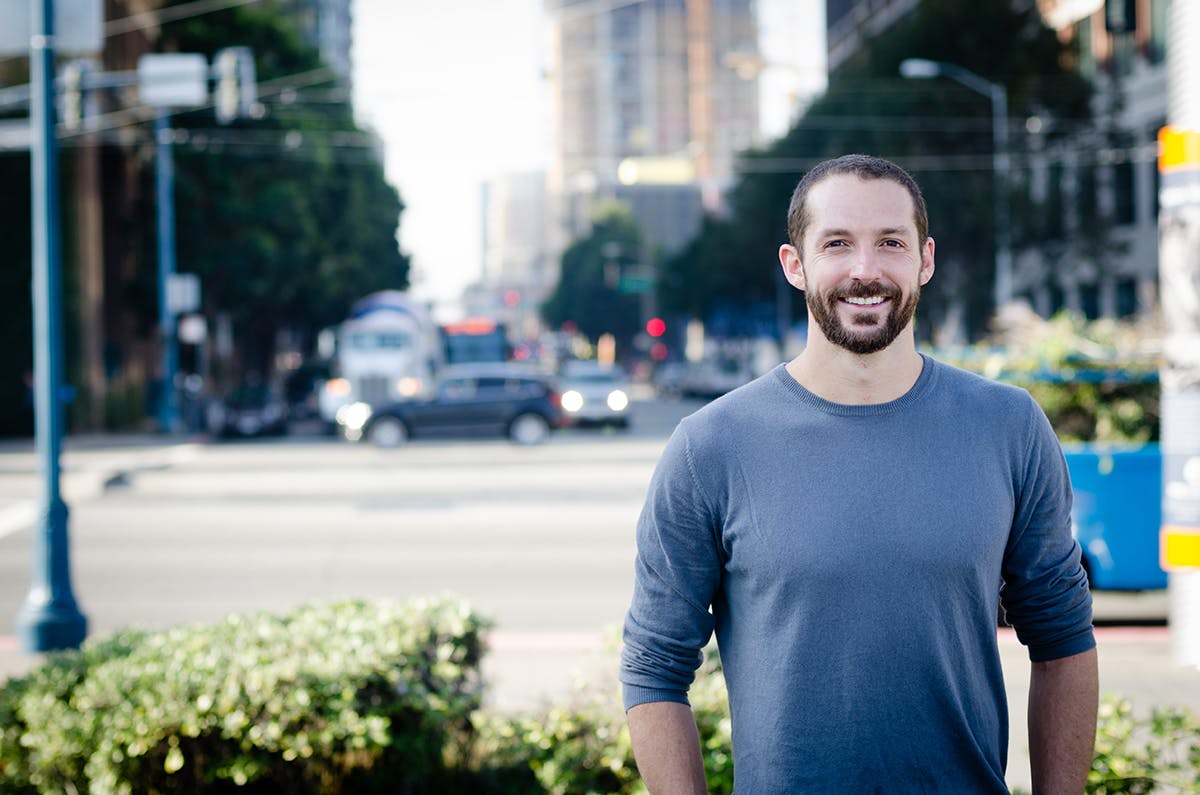Empower your providers – An interview with Shelby Clark
Shelby Clark advises marketplace entrepreneurs to focus on high-quality supply from the very beginning.
Published on
Last updated on

Inspiration and insights from global marketplace experts and thought leaders. For our tips on growing your business, check out the marketplace marketing & growth articles library.
Shelby Clark advises marketplace entrepreneurs to focus on high-quality supply from the very beginning.
The collaborative economy is powered by its providers, working around the clock as drivers, chefs, hosts, and taskers. This economy is creating a new way to work, where people are no longer just consumers, but micro-entrepreneurs with a portfolio of income streams. As Peers put it, the collaborative economy enables “flexible work that fits your lifestyle, rather than dictating it.”
– It is really exciting, earning income on their own terms, says Shelby Clark, former CEO of Peers and founder of RelayRides, one of the most popular peer-to-peer car sharing platforms.
The possibility to accept a gig—become a driver or a house cleaner—at any time, in a couple of clicks, means people can work whenever they want. They can work around their kids’ schedules, do more work for one month than another, or using the work as a way to bridge careers.
– There are a lot of great aspects to it, argues Clark.
He points to the dozens of ways individuals can make ends meet using their existing idle assets: goods, property, or time. In that sense, the sharing economy is probably the easiest way for anyone to become an independent worker or entrepreneur. In the rapidly growing freelance workforce, the fastest growing segment is the sharing economy workers. This raises both opportunities and concerns.
– People are asking if these are good jobs. I think they are different jobs. A different way to support yourself—one without the social safety net and protections that usually come with a job. At Peers, we are trying to rethink the protections that are needed.
"We want to make sure that if you are injured, you are not just left out in the cold. We are trying to make these kinds of protections for workers in the sharing economy."
Clark believes the markets can find solutions to the vulnerability—the lack of protections—created by the new, uncertain types of work. Using ridesharing as an example, he highlights the need for proper types of insurance for drivers in the sharing economy.
– As a driver, there is a real possibility of being in an accident or getting injured. You should not bear the full risk. We want to make sure that if you are injured, you are not just left out in the cold. We are trying to make these kinds of protections for workers in the sharing economy.
The latest addition is Keep Driving, a replacement car program for drivers. If your car has been stolen or damaged by an accident, fire, or rideshare passenger, Peers gives you a backup vehicle to keep driving and earning. As one driver puts it on their website, “I was back on the road in just a few days, restoring my income potential while waiting for my car to be repaired.”
In addition to organizations like Peers, Clark believes that the platforms, governments, and regulators have an important role to play.
– Relying on any one of the stakeholders is not going to work. Sometimes the interests of platforms are not really aligned with its workers. If you just wait for regulation, it is going to take forever. This economy is changing so rapidly, and the regulations are rigid and not responsive to changes. Third parties cannot do everything themselves, either. There is a role for all three of them to play together.
Peer-to-peer marketplace entrepreneurs can help make sure that their providers are not left vulnerable by providing insurance and other benefits tailored to the needs of freelancers. To catch providers’ attention, Clark recommends focusing on solving a real need of theirs.
– For a lot of these marketplaces, the real need is to earn an income. In the early days of RelayRides, people liked the concept for many reasons, like earning money or thinking about the environmental or community impact. But what caught their attention was the practical aspect of earning money. What caused them to love it or stick around were the other factors.
"You get supply first. That is the answer. And it has to be high-quality supply."
In the early days of RelayRides, the team thought it was a question of which side to get first: supply or demand. Six years down the line, the answer is crystal clear.
– You get supply first. That is the answer. And it has to be high-quality supply.
When RelayRides was started, the debate was centered on where to set the bar.
– In the instance of photos, we were wondering whether we should allow listing a car without a photo. We could always have pulled out a photo of a Jetta and add it automatically, but that would not work. We wanted car owners who were committed enough to take a photo of their car. We wanted the photo to be representative of what you would actually be getting.
– If you set the bar too low, you get a lot of low-quality supply, which results in a poor experience. I think it is better to grow slowly and focus on getting higher-quality supply than just letting anyone in.
You will likely need to spend time looking for supply. According to Clark, it can be hard to find.
– When we started RelayRides, no one was searching for “renting out my car”. We had to find other ways to market it to people. One thing that was really successful was investing heavily in a blog that covers all sorts of personal finance topics, like earnings and saving money.
Now, when people search for solutions to a problem, they might come across one of their blog articles. On the blog, the content will live forever.
– It takes a long time to build up a useful base of content that is actually going to be effective in driving people to your site. I think it is a good long-term investment. It is not going to replace the need to build the initial part of your user base, but it is a great strategy for scaling.
"In the beginning, we launched a really basic website and printed out 10.000 postcards that we handed out on the street."
Another strategy is to tell human stories.
– We had a marketing team tell stories about individuals, Clark recounts.
– We got a lot of press—people were bewildered that we would rent out their cars to strangers. The interesting part was to tell why people were sharing their car, and the impact it was having on their life. Suddenly, we had profiles on our blog that people could identify with.
On the blog, you can meet Geoff, who provides a truck rental. Or Shelly, who rents out her art car to spread joy. They are both parts of the lively community that started off as some tens of people who believed in the idea.
– In the beginning, we launched a really basic website and printed out 10.000 postcards that we handed out on the street, Clark recalls.
Venture capitalists believed it was an interesting idea, but thought people would never let strangers in their cars.
– We talked to people and listened to what their concerns were. In the end, we had 40 strangers who were willing to share their cars. And that was enough to go back to investors and say: “People really want to rent out their cars”. They responded with: “How much money do you want?“
"Make fewer things better. Do more of what they like and less of what they hate."
Simply having supply does not mean that demand will appear. But if supply does not exist, you will not get demand.
– For us, getting demand was not the biggest problem. People search for rental cars. For demand, it is easier to use traditional marketing tools like Facebook advertising and search engine marketing.
Clark encourages entrepreneurs to focus on their core business.
– If there is one thing I learned at RelayRides, it is the importance of focus. As an entrepreneur, there is always the temptation to do lots of different things. Many small distractions pull you away from what you really should be focusing on. Do a lot of testing. Talk to your community and see what they like and hate.
The solution is simple.
– Make fewer things better. Do more of what they like and less of what they hate.
You might also like...

How to communicate your marketplace value proposition
Making sure every visitor knows how your marketplace can help them.

Marketplace metrics: 26 key metrics and how to use them
What metrics should a marketplace founder track? And how to translate what you track into action? Here’s how to identify and track the key metrics, how to separate them from vanity metrics, and how to make concrete decisions based on reliable data.

What to do if your marketplace business slows down
Five recommendations to consider for your marketplace during times of slower business. Some can help you make it through these difficult times, others prepare your business for better ones ahead.
Start your 14-day free trial
Create a marketplace today!
- Launch quickly, without coding
- Extend infinitely
- Scale to any size
No credit card required
